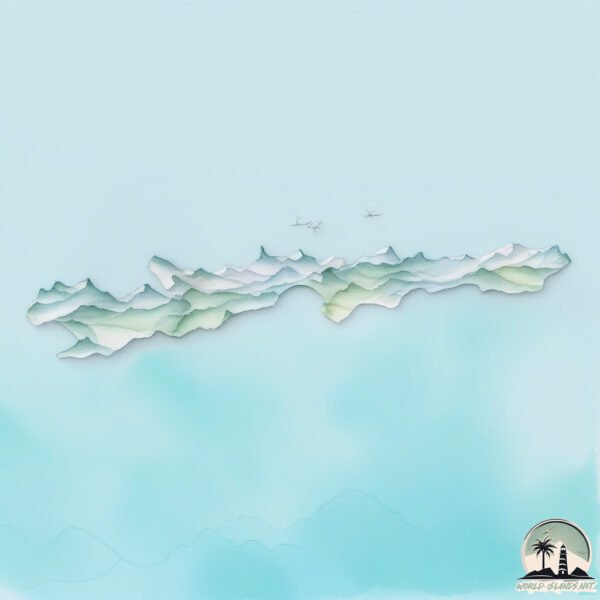Welcome to Isla de los Estados , a Polar island in the South Atlantic Ocean, part of the majestic Atlantic Ocean. This guide offers a comprehensive overview of what makes Isla de los Estados unique – from its geography and climate to its population, infrastructure, and beyond. Dive into the details:
Geography and size of Isla de los Estados
Size: 483.9 km²Coastline: 440.3 kmOcean: Atlantic OceanSea: South Atlantic OceanContinent: South America
Isla de los Estados is a Large Island spanning 484 km² with a coastline of 440 km.
Archipel: Andes fueguinos – A subregion of Tierra del Fuego in the southernmost tip of South America, known for its rugged mountain landscapes and remote beauty.
Tectonic Plate: Scotia – Situated in the Southern Ocean, surrounding the Scotia Sea, between South America and Antarctica, known for the Scotia Arc and active seismicity.
The geographic heart of the island is pinpointed at these coordinates:
Climate and weather of Isla de los Estados
Climate Zone: PolarClimate Details: TundraTemperature: Cold
Climate Characteristics: The tundra climate features long, extremely cold winters and short, cool summers. Vegetation is limited to mosses, lichens, and small shrubs due to the low temperatures and short growing seasons. Biodiversity is low, but some specialized species thrive.
Topography and nature of Isla de los Estados
Timezone: UTC-03:00Timezone places: America/Sao_PauloMax. Elevation: 718 m Mean Elevation: 204 mVegetation: Evergreen Broadleaf ForestTree Coverage: 53%
The mean elevation is 204 m. The highest elevation on the island reaches approximately 718 meters above sea level. The island is characterized by Plateau: Elevated flatlands rising sharply above the surrounding area, with a maximum elevation over 500 meters but a mean elevation less than 300 meters, forming unique highland areas on islands.
Dominating Vegetation: Evergreen Broadleaf Forest
Vegetation: 12 vegetation zones – Exceptionally Diverse Island
Infrastructure and Travelling to Isla de los Estados
Does the island have a public airport? no .
Does the island have a major port? no .
The mean population of Isla de los Estados is 9 per km². Isla de los Estados is Gently Populated. The island belongs to Chile .
The name of the island resonates across different cultures and languages. Here is how it is known around the world: Arabic: جزيرة الدول; Spanish: Isla de los Estados; French: Île des États; Portuguese: Ilha dos Estados; Russian: Эстадос; Chinese: 艾斯塔多島
Continuing your journey, Nueva is the next notable island, situated merely km away.
Isla de los Estados -The Expedition.
Isla de los Estados -Staten Island, is a remote wild Island at the eastern tip of Tierra del Fuego, south of Patagonia, near the Cape ...
Isla de los Estados -The Expedition.
Isla de los Estados -Staten Island, is a remote wild Island at the ...
Isla de los Estados -Staten Island, is a remote wild Island at the eastern tip of Tierra del Fuego, south of Patagonia, near the Cape ...
Isla de los Estados & Peninsula Mitre
Images of isla de los Estados and Penisnula Mitre.
Images of isla de los Estados and Penisnula Mitre.
Atlántico Sur: Isla de los Estados (capítulo completo) - Canal Encuentro
Durante milenios, los humanos arriesgaron su vida para llegar una y ...
Durante milenios, los humanos arriesgaron su vida para llegar una y otra vez a uno de los lugares más enigmáticos del extremo ...
Chile is classified as Emerging region: G20: Group of Twenty – Major economies comprising both developed and emerging countries, representing the world’s largest economies. The level of income is Upper middle income.
News – Latest Updates and Headlines from Isla de los Estados
Stay informed with the most recent news and important headlines from Isla de los Estados. Here’s a roundup of the latest developments.
Loading...
Please note: The data used here has been primarily extracted from satellite readings. Deviations from exact values may occur, particularly regarding the height of elevations and population density. Land area and coastline measurements refer to average values at mean high tide.

